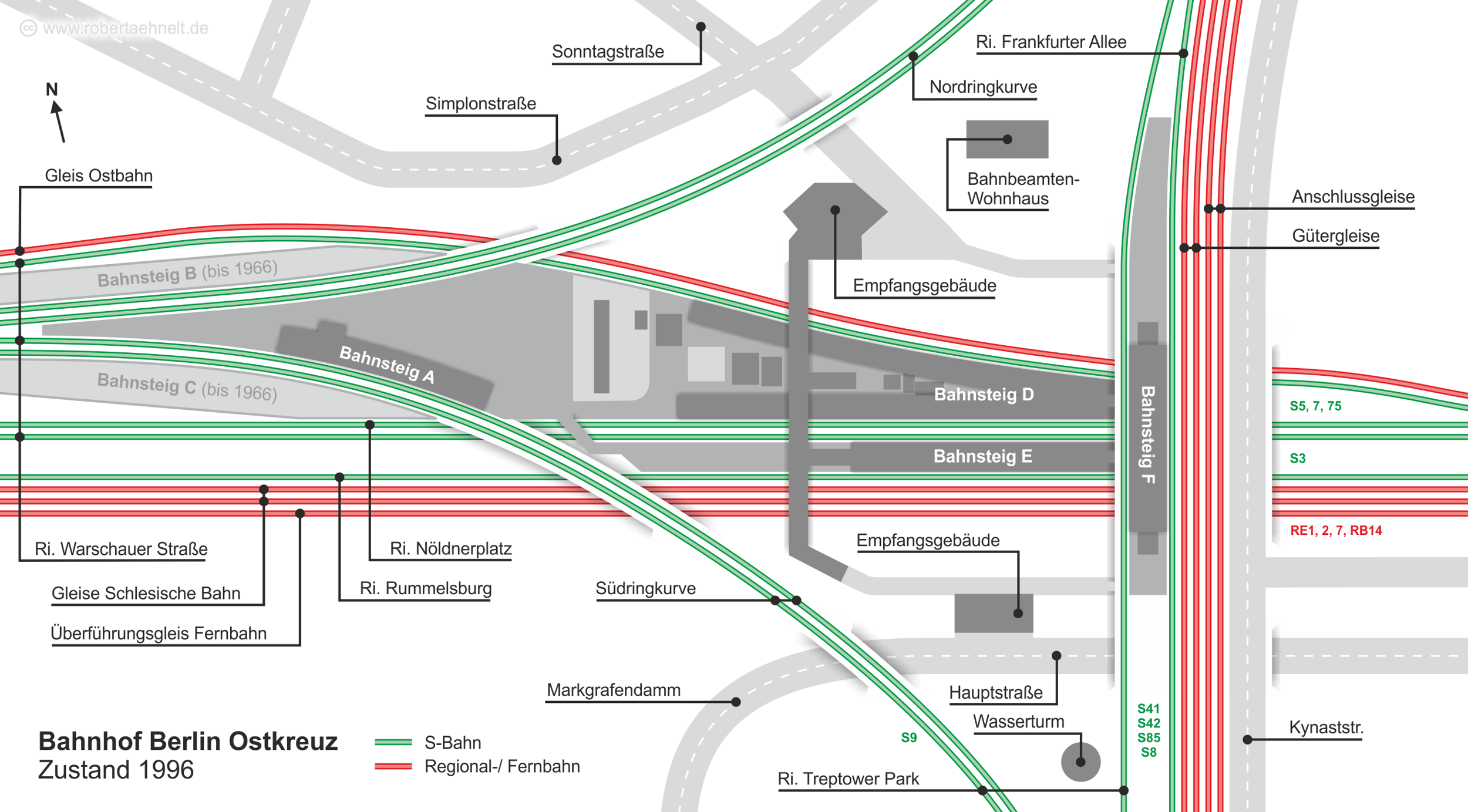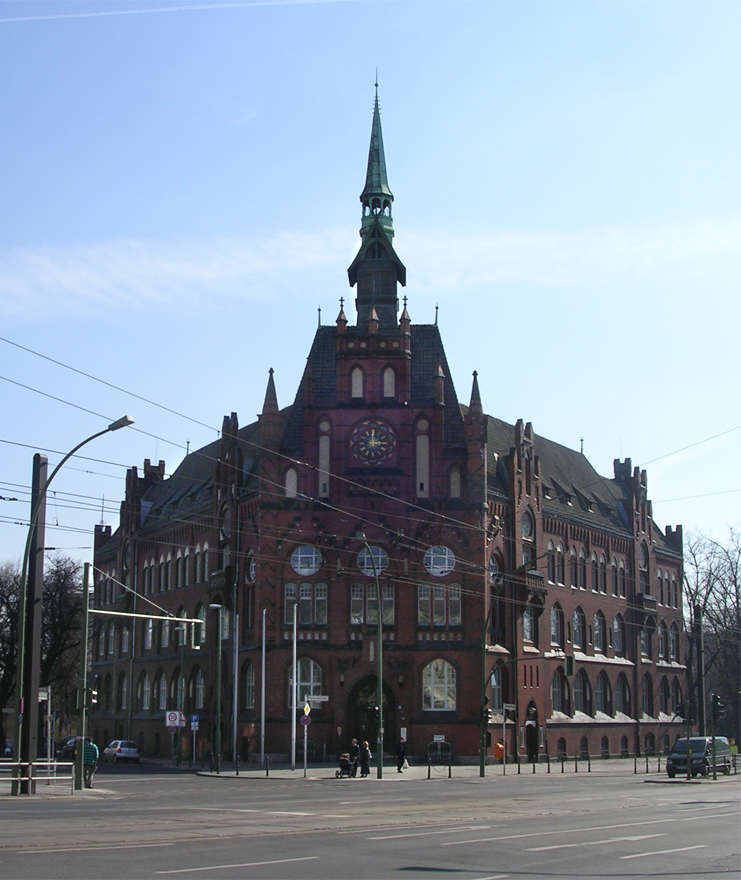|
Rummelsburg
Rummelsburg () is a subdivision or neighborhood (''Ortsteil'') of the Boroughs and neighborhoods of Berlin, borough (''Bezirk'') of Lichtenberg, Berlin, Lichtenberg of the German capital, Berlin. History Rummelsburg was founded in 1669. On 30 January 1889 it became a rural municipality, with the name of Boxhagen-Rummelsburg. Merged in 1912 in the town of Lichtenberg, in 1920 it was incorporated in Berlin with the ''Greater Berlin Act''. Geography Overview Located in the eastern side of the city and crossed by Spree (river), Spree river in the western corner, Rummelsburg borders with Lichtenberg (locality), Lichtenberg, Friedrichsfelde, Karlshorst, Friedrichshain (in Friedrichshain-Kreuzberg district), Plänterwald and Oberschöneweide (both in Treptow-Köpenick district). The lake Rummelsburger See belongs to the locality and separates it from Stralau, a zone of Friedrichshain. Subdivision Rummelsburg counts 1 zone (''Ortslage''): *Victoriastadt Transport The locality is served ... [...More Info...] [...Related Items...] OR: [Wikipedia] [Google] [Baidu] |
Berlin-Betriebsbahnhof Rummelsburg Station
Berlin-Rummelsburg Betriebsbahnhof station is a former freight yard, currently used as a ''Betriebsbahnhof'' (“operations station”), in the suburb of Rummelsburg in the Lichtenberg, Berlin, Lichtenberg district of Berlin. It is primarily used as a depot for the storage and maintenance of passenger train sets used for long-distance traffic. In particular, InterCity Express trains terminating in Berlin are stored there. Deutsche Bahn officially call the station ''Berlin-Rummelsburg'', but it is not to be confused with the more westerly Berlin-Rummelsburg railway station, Berlin-Rummelsburg S-Bahn station. The Berlin S-Bahn, S-Bahn section of the precinct is called ''S-Bahnhof Betriebsbahnhof Berlin-Rummelsburg'' (Berlin-Rummelsburg operations station S-Bahn station), which is classifies as a ''Haltepunkt'' (a “halt”, that is it has no sets of Railroad switch, points). It is served by Berlin S-Bahn, S-Bahn line . Location The station is located on the Berlin–Wrocław rai ... [...More Info...] [...Related Items...] OR: [Wikipedia] [Google] [Baidu] |
Berlin-Rummelsburg Station
Berlin-Rummelsburg station is a station in the suburb of Rummelsburg in the Lichtenberg district of Berlin. The station is located on the Berlin–Frankfurt (Oder) railway (“Lower Silesian–Markish Railway”) and is served by line S3 of the Berlin S-Bahn. It is not to be confused with Berlin-Rummelsburg Betriebsbahnhof, which lies further east and was formerly a freight yard and is now used for the maintenance of long-distance trains. Berlin-Rummelsburg Betriebsbahnhof S-Bahn station is also in the precinct of that station. Location and construction The S-Bahn station is located at kilometre 3.2 of the Berlin–Frankfurt (Oder) railway. The entrance from Nöldnerstraße and Hauptstraße connects with the western end of the platform. The station includes an island platform, but it has no independent entrance building as facilities for passenger handling are located in the entrance passage. This was built within the rail viaduct. A lift provides barrier-free access to the ... [...More Info...] [...Related Items...] OR: [Wikipedia] [Google] [Baidu] |
Rummelsburg (Berlin)
Rummelsburg () is a subdivision or neighborhood (''Ortsteil'') of the borough (''Bezirk'') of Lichtenberg of the German capital, Berlin. History Rummelsburg was founded in 1669. On 30 January 1889 it became a rural municipality, with the name of Boxhagen-Rummelsburg. Merged in 1912 in the town of Lichtenberg, in 1920 it was incorporated in Berlin with the ''Greater Berlin Act''. Geography Overview Located in the eastern side of the city and crossed by Spree river in the western corner, Rummelsburg borders with Lichtenberg, Friedrichsfelde, Karlshorst, Friedrichshain (in Friedrichshain-Kreuzberg district), Plänterwald and Oberschöneweide (both in Treptow-Köpenick district). The lake Rummelsburger See belongs to the locality and separates it from Stralau, a zone of Friedrichshain. Subdivision Rummelsburg counts 1 zone (''Ortslage''): * Victoriastadt Transport The locality is served by several urban rail lines of ''S-Bahn'' and ''U-Bahn''. The stations serving the locality ... [...More Info...] [...Related Items...] OR: [Wikipedia] [Google] [Baidu] |
Berlin Ostkreuz Station
Berlin Ostkreuz station () (literally "Berlin East Cross") is a station on the Berlin S-Bahn suburban railway and the busiest interchange station in Berlin. It is in the former East Berlin district of Friedrichshain, now part of the Boroughs of Berlin, borough of Friedrichshain-Kreuzberg. A smaller part of the station is in Rummelsburg, part of the borough of Lichtenberg, Berlin, Lichtenberg. The station is a ''Turmbahnhof'' ("tower station", i.e., a two-level interchange) with the Berlin–Wrocław railway, Berlin–Frankfurt (Oder) railway ("Lower Silesian–March Railway") and the Prussian Eastern Railway on the lower level and the Berlin Ringbahn on the upper level. It is used by a total of around 235,000 passengers every day on eight lines, entering or leaving. The station was completely reconstructed from 2006 to December 2018 while operations continued. In the past it was exclusively used as a Berlin S-Bahn station, but it is now also a stopping point for regional services. ... [...More Info...] [...Related Items...] OR: [Wikipedia] [Google] [Baidu] |
Berlin S-Bahn
The Berlin S-Bahn () is a rapid transit railway system that services the reigon in and around Berlin, the capital city of Germany. It has been in operation under the name since December 1930, having been previously called the special tariff area ('Berlin city, orbital, and suburban railways'). It complements the Berlin U-Bahn and is the link to many outer-Berlin areas, such as Berlin Brandenburg Airport. As such, the Berlin S-Bahn blends elements of a commuter rail service and a rapid transit system. In its first decades of operation, the trains were steam-drawn; even after the railway electrification system, electrification of large parts of the network, some lines remained under steam. Today, the term ''S-Bahn'' is used in Berlin only for those lines and trains with Third rail, third-rail electrical power transmission and the special Berlin S-Bahn loading gauge. The third unique technical feature of the Berlin S-Bahn, the automated mechanical train control (works very similar ... [...More Info...] [...Related Items...] OR: [Wikipedia] [Google] [Baidu] |
Lichtenberg (locality)
Lichtenberg () is a quarter (''Ortsteil'') of Berlin in the homonymous borough (''Bezirk'') of Lichtenberg. Until 2001 it was an autonomous district with the localities of Fennpfuhl, Rummelsburg, Friedrichsfelde and Karlshorst. History The historic village of Lichtenberg, today also called ''Alt-Lichtenberg'', was founded about 1230, due to the German colonization of the territory of Barnim. The settlement around the fieldstone church was first mentioned in a 1288 deed, its estates were acquired by the neighbouring City of Berlin in 1391. ''Alt-Lichtenberg'' suffered severely during the Thirty Years' War and remained a small village at the Berlin gates until in the late 18th century Prussian noblemen like general Wichard Joachim Heinrich von Möllendorf built their residences here. In 1815 the Lichtenberg estate became a property of the Prussian chancellor Karl August von Hardenberg. The village came to be a residential area and a suburb of Berlin from the mid 19 ... [...More Info...] [...Related Items...] OR: [Wikipedia] [Google] [Baidu] |
Friedrichsfelde
Friedrichsfelde () is a German locality (''Ortsteil'') within the borough (''Bezirk'') of Lichtenberg, Berlin. History The locality was first mentioned in a document of 1265 with the name of ''Rosenfelde''. In 1699 it was renamed Friedrichsfelde after the Prince-Elector Frederick III of Brandenburg. It was an autonomous municipality of the former Niederbarnim district until 1920, when it merged into Berlin under the "Greater Berlin Act". Geography Located in eastern suburb of Berlin, Friedrichsfelde borders with the localities of Lichtenberg, Rummelsburg, Karlshorst, Marzahn and Biesdorf (both in Marzahn-Hellersdorf district). In its south-eastern corner is situated the " Tierpark Berlin", the second zoo of the city. Transport As urban rail, Friedrichsfelde is crossed both by ''S-Bahn'' and ''U-Bahn''. The stations serving the locality are Friedrichsfelde Ost (lines S5, S7, S75), Friedrichsfelde ( U5), Tierpark (U5) and partly Rummelsburg Rummelsburg () is a subdivis ... [...More Info...] [...Related Items...] OR: [Wikipedia] [Google] [Baidu] |
Oberschöneweide
Oberschöneweide (, literally ''Upper Schöneweide'') is a German locality (''Ortsteil'') within the Berlin borough (''Bezirk'') of Treptow-Köpenick. It is, with Niederschöneweide (''Lower Schöneweide''), part of the geographic area of Schöneweide. Until 2001 it was part of the former borough of Köpenick. History First mentioned in 1598 as ''Schöne Weyde'', it became an industrial town at the end of the 19th century. In 1920 it merged into Berlin as a result of the Greater Berlin Act. The Berlin territorial reform, in effect from 1 April 1938, also affected the districts of Treptow and Köpenick. The districts of Oberschöneweide and Wuhlheide were removed from the Treptow district and incorporated into the Köpenick district. In the Nazi era, Oberschöneweide developed into a stronghold of resistance against National Socialism, which despite constant arrests and death sentences could not be broken. The resistance cells were most numerous from 1942-1944. The factories in O ... [...More Info...] [...Related Items...] OR: [Wikipedia] [Google] [Baidu] |
Boroughs And Neighborhoods Of Berlin
Berlin is divided into boroughs or administrative districts (). In Berlin, the term is officially shortened to (districts). The boroughs are further divided into quarters (). These smaller localities are officially recognised, but have no administrative bodies of their own. Quarters and many of their subunits, the neighborhoods (), typically have strong identities that sometimes predate their inclusion into the modern boundaries of Berlin. Both the boroughs and the quarters function differently to other subdivisions in Germany due to Berlin's dual status as an independent city () as well as a federated state of Germany () in its own right. Since 2001, Berlin has been made up of twelve boroughs, each with its own administrative body. However, because Berlin is a single municipality (), its boroughs have limited power, acting only as agencies of Berlin's state and city governments as laid out in the Greater Berlin Act of 1920. The boroughs are financially dependent on state donat ... [...More Info...] [...Related Items...] OR: [Wikipedia] [Google] [Baidu] |
Lichtenberg, Berlin
Lichtenberg () is the eleventh Boroughs of Berlin, borough of Berlin, Germany. In Berlin's 2001 administrative reform it absorbed the former borough of Hohenschönhausen. The borough was formerly part of East Berlin. Overview The district contains the Tierpark Berlin in Friedrichsfelde, the larger of Berlin's two zoological gardens. During the period of Berlin's partition between West and East, Lichtenberg was the location of the headquarters of the Stasi, the East Germany, East German state security service. Prior to the establishment of the East Germany, GDR it housed the main office of the Soviet Military Administration in Berlin, and before that it was an officers' mess of the Wehrmacht. The complex is now the location of the Stasi Museum. The Berlin-Hohenschönhausen Memorial is on the site of the main remand prison of the Stasi. Additionally, Lichtenberg is the location of the German-Russian Museum, the historical venue of the unconditional surrender of the German armed forc ... [...More Info...] [...Related Items...] OR: [Wikipedia] [Google] [Baidu] |
Berlin Nöldnerplatz Station
Berlin Nöldnerplatz is a railway station in the Rummelsburg quarter of the Lichtenberg borough in Berlin. It is served by the S-Bahn lines , and . The station is located on the eponymous square named after the Communist Communism () is a sociopolitical, philosophical, and economic ideology within the socialist movement, whose goal is the creation of a communist society, a socioeconomic order centered on common ownership of the means of production, di ... and resistance fighter Erwin Nöldner, killed in 1944, who lived nearby. References Berlin S-Bahn stations Buildings and structures in Lichtenberg {{Berlin-railstation-stub ... [...More Info...] [...Related Items...] OR: [Wikipedia] [Google] [Baidu] |
Friedrichshain
Friedrichshain () is a quarter (''Ortsteil'') of the borough of Friedrichshain-Kreuzberg in Berlin, Germany. From its creation in 1920 until 2001, it was a freestanding Boroughs of Berlin, city borough. Formerly part of East Berlin, it is adjacent to Mitte, Prenzlauer Berg, Kreuzberg and Lichtenberg, Berlin, Lichtenberg. Friedrichshain is named after the ''Volkspark Friedrichshain'', a vast green park at the northern border with Prenzlauer Berg. In the Nazism, Nazi era, the borough was called ''Horst Wessel, Horst-Wessel-Stadt''. Friedrichshain is one of the trendy districts of Berlin and has experienced gentrification. Geography Friedrichshain is defined by the following roads and places, starting clock-wise in the west: Lichtenberger Straße, Mollstraße, Otto-Braun-Straße, Am Friedrichshain, Virchowstraße, Margarete-Sommer-Straße, Danziger Straße, Landsberger Allee, Hausburgstraße, Thaerstraße, Eldenaer Straße, S-Bahn-Trasse, Kynaststraße, Stralauer Halbinsel, Spree. ... [...More Info...] [...Related Items...] OR: [Wikipedia] [Google] [Baidu] |


